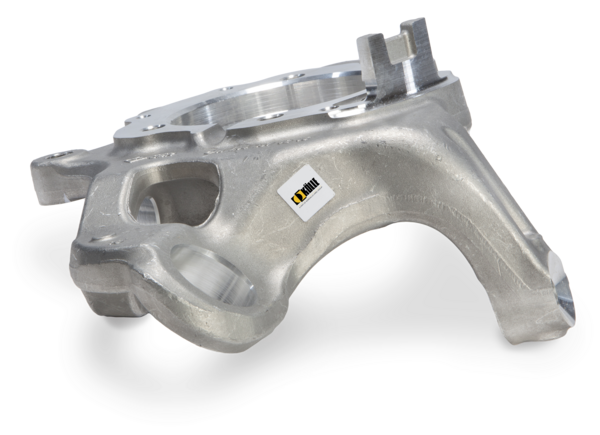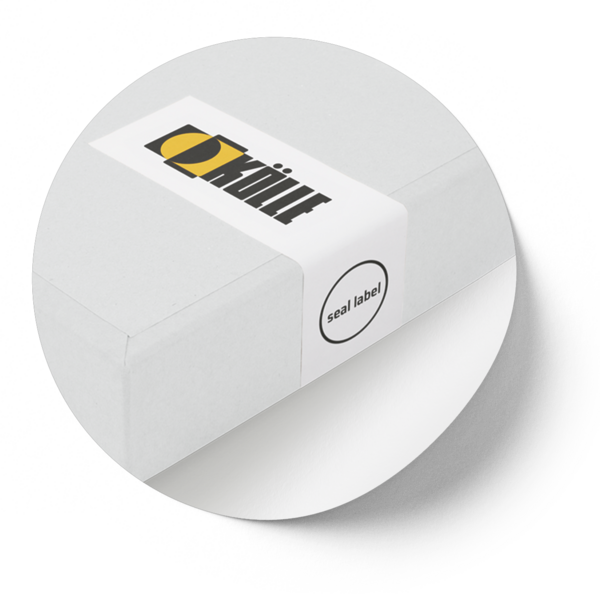Labels for bags and pouches Labels for cast parts Cable labels Opaque labels Tamper-evident pharmaceutical labels
Every label is special in its own way!
In our special labels section you will find selected label types and label types.
The link buttons above will take you directly to the respective label.
The variety of applications and uses for labels is enormous. Basically, a label is usually used to label an object. In addition, there are other requirements that must be met, such as industry-specific standards, adhesion behaviour on certain surfaces, resistance, etc.
New applications and available materials are constantly being added. We are happy to offer you the labelling requirements that you already use today or support you in the development of a new label for a specific application.

Labels for bags and pouches
Labels for bags and sachets characterise the contents and also achieve an advertising effect
Coffee or tea, sweets, sweets or other foods are usually filled in such packaging. There is a wide range of bag and pouch types that can be labelled. No matter which bag or pouch you want to label: We have the right labels for flat-bottom bags, stand-up pouches / doypacks, flat-bottom bags, block-bottom bags, gusseted bags, pointed bags and others.
Application / advantages:
- The labels can be used to display necessary information such as manufacturer, ingredients, best-before date or barcodes (e.g. EAN codes or QR codes).
- In addition, the labels are used to identify what is inside the packaging and achieve a promotional effect on the shelf through an appealing, colourful design.
Variations / material types:
- The labels can be printed in one or more colours and can be coated if required
- On request, the material can be selected so that you can subsequently print additional information, for example using thermal transfer printing or inkjet printing
- Blank labels can be supplied for customised printing using digital printing
- Various sizes and die-cut shapes according to customer requirements
- A wide variety of paper and film types are available (e.g. white, coloured, silver, paper-laminated aluminium foil, transparent, matt, glossy...)
- The colours and label materials / adhesives used are suitable for indirect food contact

Labels for cast parts
Labels for rough surfaces on cast or forged parts
Cast or forged parts usually have rough surfaces and special adhesive labels are used here, which are provided with a particularly strong special adhesive. For example, you can optimally mark your parts made of grey cast iron, cast aluminium, cast steel, ductile cast iron, cast iron, etc. with our special high-performance labels, which you can mark beforehand.
Application / advantages:
- Extremely high adhesive strength on rough surfaces
- The label rolls are loosely wound so that the adhesive does not bleed
- Good dispensability despite high adhesive application (up to 100 µm adhesive depending on the application) is possible
- High temperature resistance
- Can also be used for other rough surfaces such as textured plastic parts
Variations / material types:
- Different adhesive quantity or adhesive thickness depending on requirements
- PET film is generally used as the face material; however, a different type of film can also be used if required
- In addition to standard materials, special composite materials can also be produced to better fulfil the desired requirements

Cable labels
Cable labels or wrap-around labels for cable labelling
They are also known as wrap-around sleeves, cable flags or flag labels and are used to label cables. The label is usually printed with thermal transfer ribbon and then stuck around a cable with the ends on top of each other.
Application / advantages:
- Flexible materials
- Strongly adhesive adhesives that are suitable for permanent round bonding
- Small, narrow labels that are easy to process
- High temperature resistance
Variations / material types:
- Transparent cable label with white space for printing and a read mark (cut-out in the backing paper between the labels)
- Very thin materials from 25µm (PET film) to 75µm (PVC film) are possible
- Material also available for extreme temperatures if required
- Solutions for tear resistance, chemical resistance, abrasion resistance, UV resistance
- UL certification if required

Opaque labels
Opaque labels (no show-through)
Opaque labels conceal unwanted information or have a masking effect (no show-through). The opaque label always looks the same, as no interfering influences from the substrate can affect the appearance.
Application / advantages:
- This is often a cheaper alternative than reprinting the entire packaging
- Overlabelling with opaque labels is used in areas such as logistics, transport, pharmaceuticals, industrial goods, etc.
- Overlaminating transparent or coloured substrates so that the printing and the surface of the label appear clearer and consistent
Variations / material types:
- The adhesive side is usually coloured black
- Alternatively, blue or blue-grey colouring is also available
- An aluminium layer on the reverse side achieves complete coverage. This also provides a protective barrier
- Opaque materials are available in paper (coated or uncoated), thermal paper, PE film and PP film. Other materials are available on request.

Tamper-evident pharmaceutical labels
Tamper-evident labels as tamper protection or tamper-evident seals for the pharmaceutical sector.
In the pharmaceutical sector, legislation requires that it must be possible to recognise product tampering with certain medicines in order to make it more difficult to counterfeit medicines. This is intended to increase patient safety and prevent damage to manufacturers. The European Directive 2011/62/EU Article 54(o) was issued for this purpose, which states that tampering must be recognisable on the outer packaging.
Application / advantages:
- Tamper-evident closure or first-opening protection for pharmaceutical packaging
- The label is applied to the folding carton for sealing and serves as a sealing label that leaves a visible change on the packaging and/or the label when an attempt is made to remove it
- Destruction of the label or visible residue on the surface of the folding carton (fibre tear on the carton surface) when attempting to remove it
Variations / material types:
- Transparent or white film labels and white paper labels for different substrates
- The pharmaceutical packaging can also be coated with a varnish and tamper protection is still possible with selected materials
- Special material designs with VOID effect
- Further material type with inspection option via luminescent detector
- For other industries, there are other material options as sealing labels that make tampering visible, such as an easily destructible PVC material
